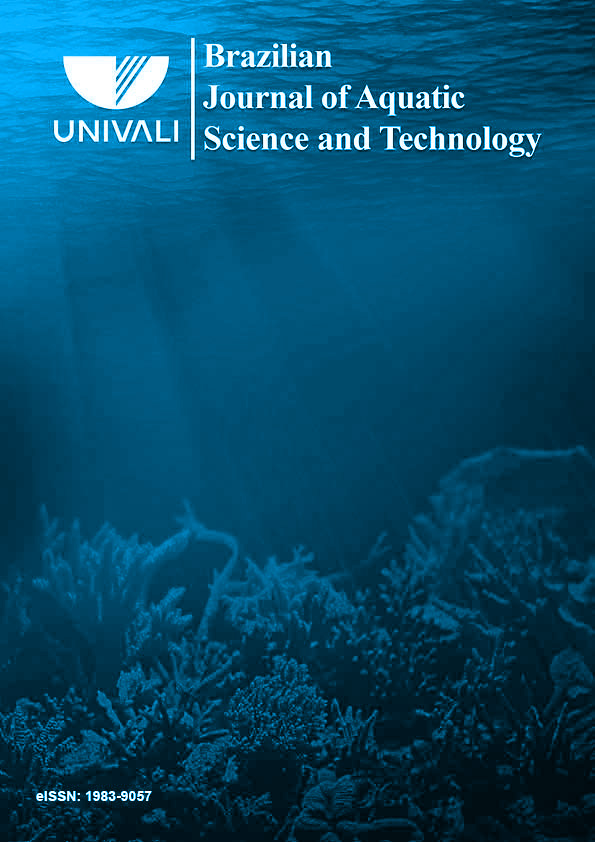Surveillance of diseases in farmed Penaeus vannamei in the indian sunderbans
DOI:
https://doi.org/10.14210/bjast.v23n1.14094Abstract
Penaeus vannamei farming has been the major aquaculture practice in the Indian Sundarbans. This study investigated the physicochemical characteristics, management practices, distribution of vibrios, and the prevalence of bacterial, parasitic and viral diseases in 14 P. vannamei intensive culture farms in the Indian Sunderbans during 2016. The total heterotrophic counts of the pond water ranged from 3.53 to 6.21 log10 cfu/ml. The presumptive vibrios were in the range of 2.40-4.99log10 cfu/ml. Mild vibriosis was noted in 3 farms. Twenty out of 21 isolates from the haemolymph samples were confirmed to be Vibrio parahaemolyticus by the PCR amplification of toxR gene. No acute hepatopancreatic necrosis disease (AHPND) causing V. parahaemolyticus (Vp AHPND) strain was, however, detected. Of the 14 shrimp farms surveyed, only one farm sample was white spot virus (WSV) positive and all others were negative. All the P. vannamei farms were negative for infectious hypodermal and haematopoietic necrosis virus, hepatopancreatic parvo-like virus, and infectious myonecrosis virus. No incidence of Enterocytozoon hepatopenaei, white faecal syndrome, running mortality syndrome, protozoan infestation, and luminous vibriosis was observed during the survey period. The survival rate was 90-95% in the normal ponds, while the lowest survival was 60% in an asymptomatic WSV infected farm. The physicochemical characteristics of the farms were well within the optimum, except the WSV infected farm, which had high ammonia levels. Due to the lack of awareness on the P. vannamei farming practices and high operational costs, the biosecurity measures were not strictly followed in the surveyed farms.
Downloads
Published
Issue
Section
License
Authors who publish with this journal agree to the following terms:
1. Authors retain copyright and grant the journal right of first publication with the work simultaneously licensed under a Creative Commons Attribution License that allows others to share the work with an acknowledgement of the work's authorship and initial publication in this journal.
2. Authors are able to enter into separate, additional contractual arrangements for the non-exclusive distribution of the journal's published version of the work (e.g., post it to an institutional repository or publish it in a book), with an acknowledgement of its initial publication in this journal.
3. Authors are permitted and encouraged to post their work online (e.g., in institutional repositories or on their website) prior to and during the submission process, as it can lead to productive exchanges, as well as earlier and greater citation of published work (See The Effect of Open Access).

